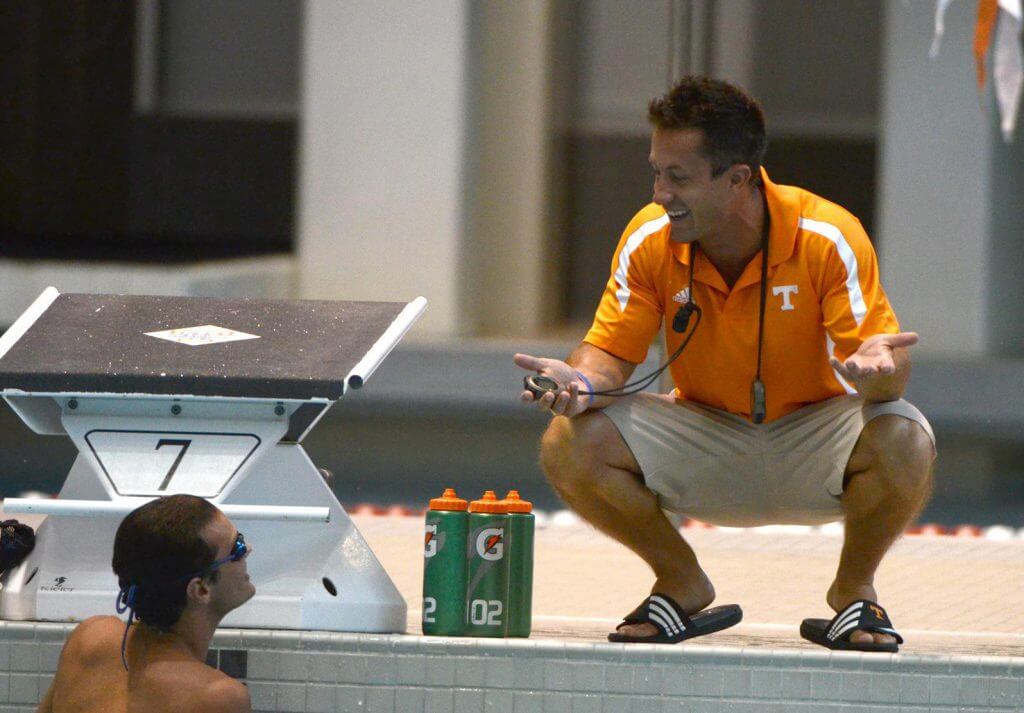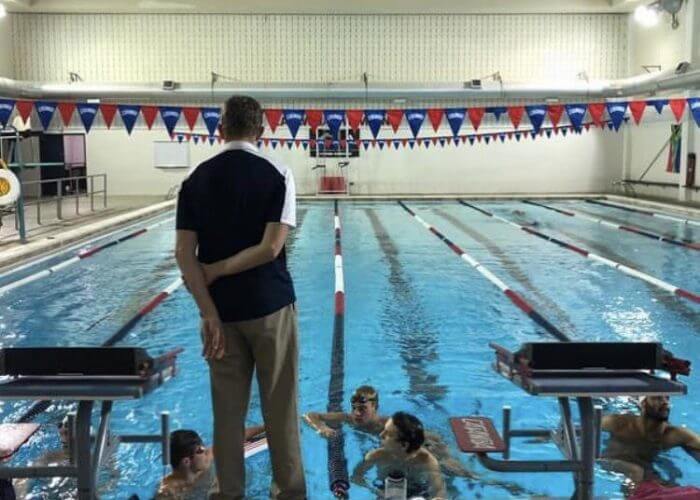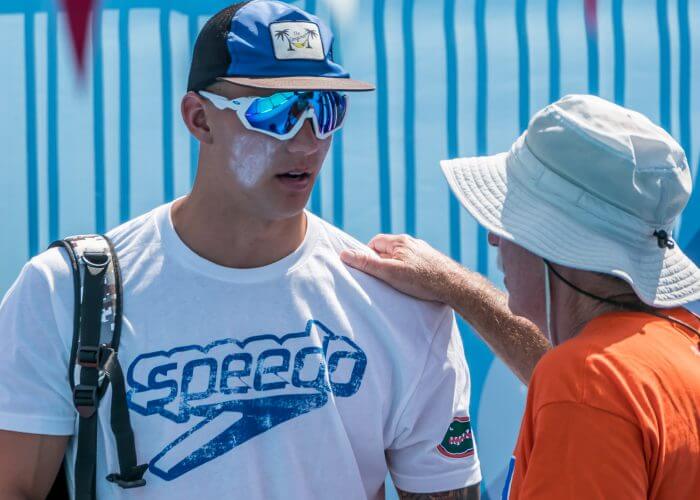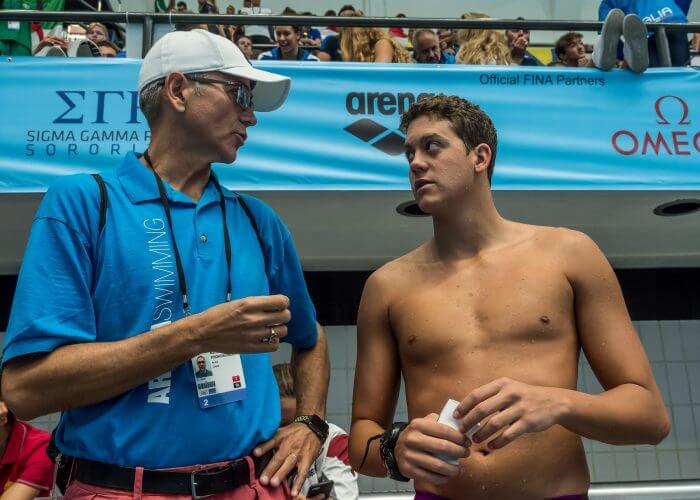Breaking Down the 3 Coaching Styles: Which Works Best for You?

By Devin Javens, Swimming World College Intern.
Throughout any swimmer’s career, they will encounter many different types of coaches with differing coaching styles. A healthy coach-athlete relationship is crucial for success, but this is only possible if the two are able to work well with each other.
Each coach varies with their own style and coaching methods; however, not all methods may be effective for each individual swimmer. It’s important to know which type of coaching style you best respond to in order to have the most effective and enjoyable relationship with your coach. What type of coach do you currently have? Read about the three different styles of coaching to find which one works best for you.
1. Autocratic Coaching.

Photo Courtesy: Instagram, @mab.nc
Often referred to as the dictatorship of coaching styles, an autocratic coach is the one calling all of the shots. This coach makes decisions for the team without consulting his athletes. These coaches “might explain the objectives and goals to their players (and they can ask limited questions), but the coach has ultimate say in regards to how the team acts and plays.” Ultimately the only role required of athletes is to follow what they are told by the coach.
Although this may be exactly what is needed for beginners and swimmers without much insight into the sport, this could hinder the success for experienced athletes. Autocratic coaches might stifle growth and creativity for these swimmers, often causing swimmers to feel unimportant and creating a low morale among the team.
2. Democratic Coaching.

Photo Courtesy: Peter H. Bick
Democratic coaching focuses more on the communication between a coach and their athletes. Instead of the coach having complete power in the autocratic style, a democratic coach encourages input from his athletes. The coach acts like a guide, overseeing suggestions that swimmers may bounce off of them. Ultimately, the coach has the final say, but not without the suggestions and opinions from his athletes. This allows athletes to bring an important role to the team while fostering an environment based on growth and collaboration.
This coach may be more appropriate for athletes with a little more self-agency. Knowing what works best for them regarding practices, weights, taper, etc., an athlete may stay in communication with their coach throughout a season about their own individual approach to each practice, meet and season. However, coaches must be mindful of not favoring the suggestions and opinions of certain athletes to maintain ultimate control over the team.
3. Laissez-Faire.
Also known as “casual coaching,” this style of coaching allows even more freedom to the athlete by basically giving them all of the power in the athlete-coach relationship. The athlete has all of the decision making power in this dynamic and only uses the coach as needed for advice and guidance. Athletes are likely allowed to come and go from practice as they please, often testing the commitment and determination of the individual.
This approach might not transfer over to swimming very well, as the main goal of this style of coaching is to build a self-sufficient team dynamic. Problems may arise if teammates are not able to work together and cooperate, often leading to many different ideas but no solid direction for the team.

Photo Courtesy: Peter H. Bick
Coaches are responsible for leading the team and cultivating an environment that encourages growth. No matter the coaching style, it’s important for swimmers to be able to relate with their coaches. By finding which coaching style works for you, you are able to identify the coaching qualities that motivate you during practices and meets. A secret to success is finding a coach that is able to help you become the best athlete you can be.
-All commentaries and research are completed by the author and do not necessarily reflect the views of Swimming World Magazine nor its staff.




Not sure that coaching styles can be limited to three…
Ric Joline not anymore.
What about transformational coaching? These other coaching styles you listed are very antiquated
There are many other styles and approaches. You can’t put coaches and people in only three categories. It is about styles and chemistry which drives motivation.
Why choose a thumbnail with Tyler coaching at a school he isn’t with anymore
I don’t believe we should be limited to only three in my humble opinion.